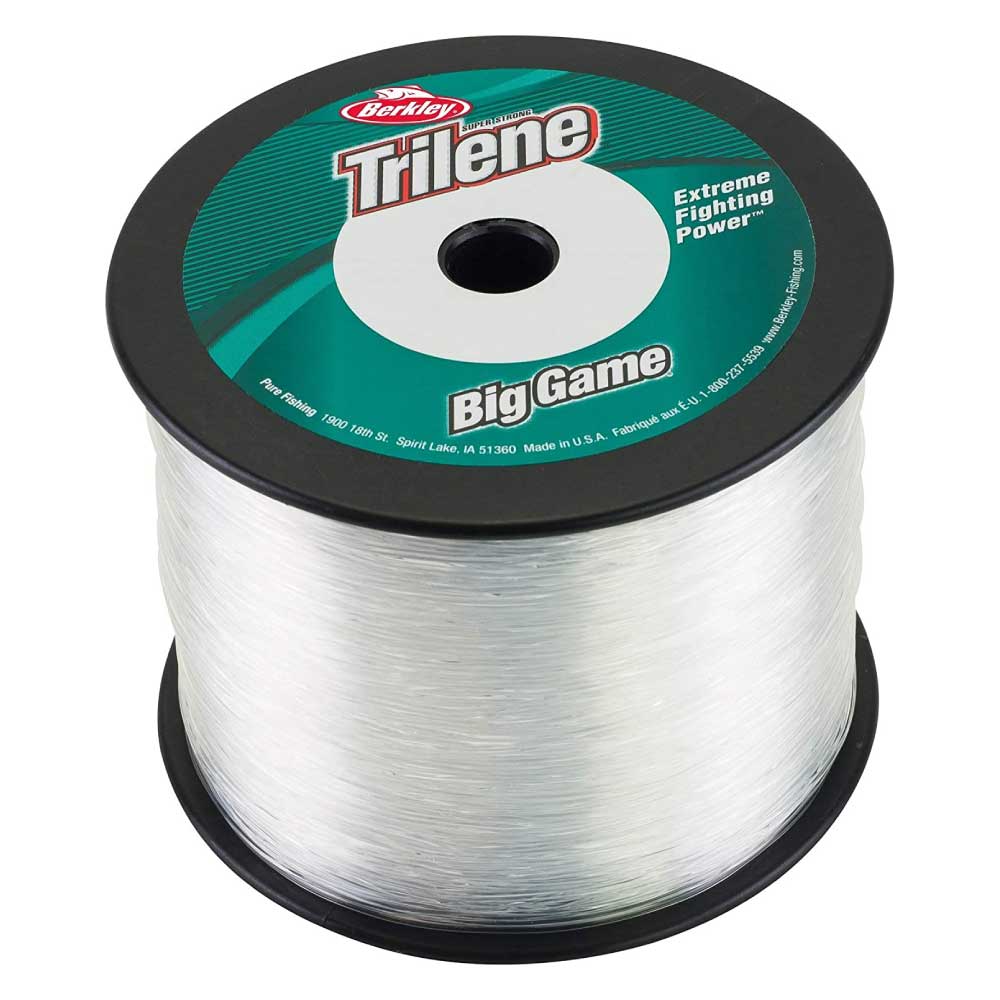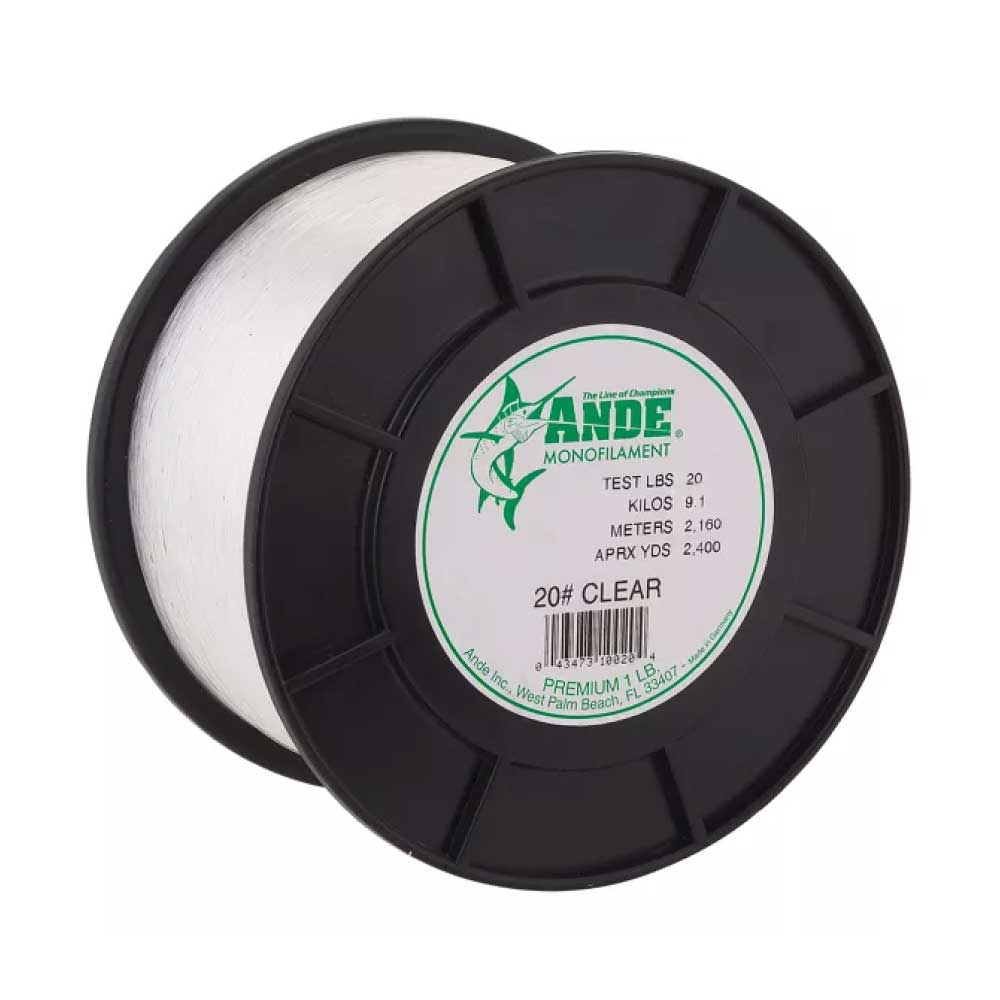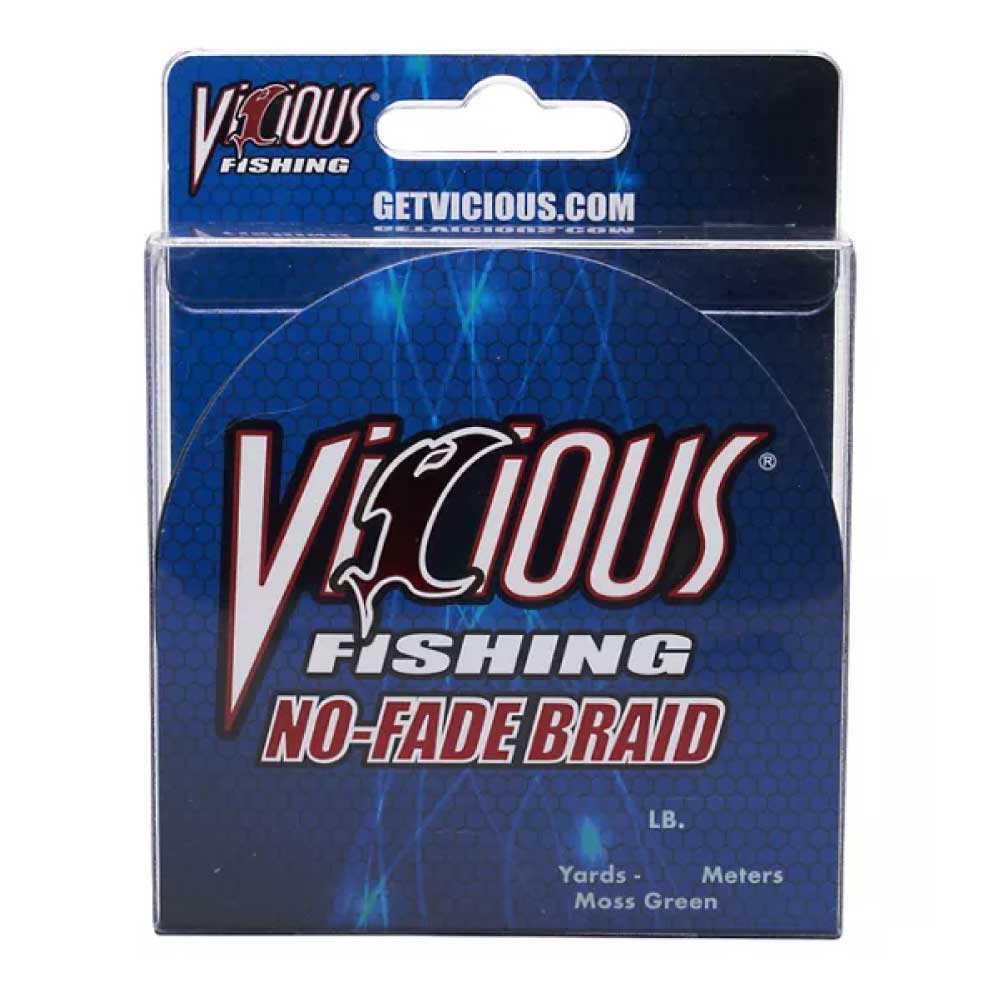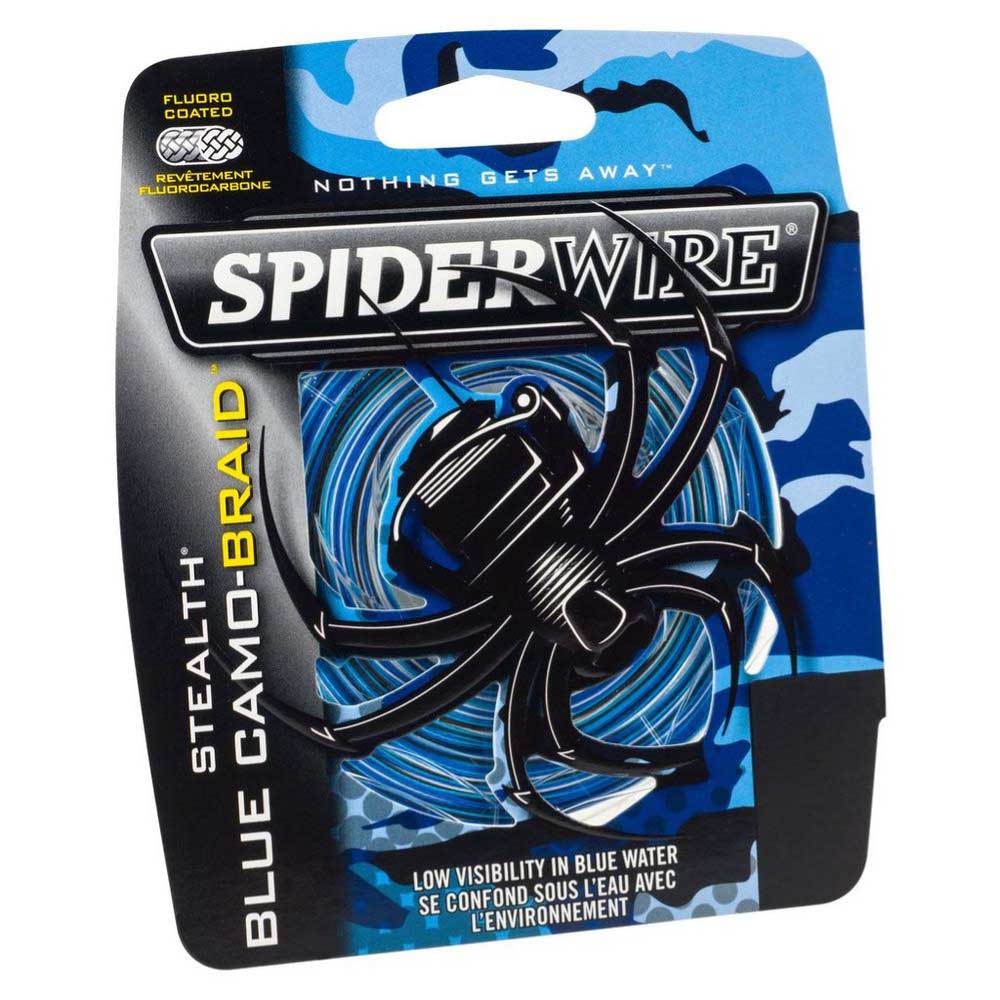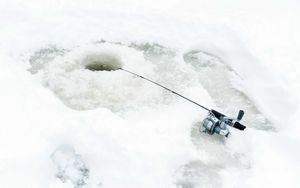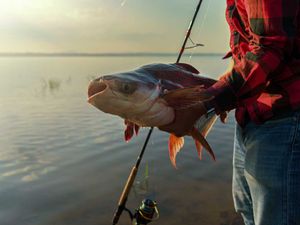In this article, we have shared with you our list of the 6 Best Fishing Lines for Spinning Reels based on our extensive research.
You will get all your questions answered about fishing lines along with our comprehensive Fishing Line Buyer’s Guide.
Introduction
Fishing line is a critical component in an anglers fishing setup.
There are many factors to consider when choosing the best fishing line for spinning reels. The type of fish you are targeting, the size of the bait, and your personal preferences will all play a role in what type of line you choose.
The line does more than connect the bait to the spinning reel. Based on an angler's needs, the line for spinning reels may need to be a very sensitive line to detect subtle bites.
Anglers may want their line to be very low visibility or nearly invisible so as not to spook sharp-eyed fish; other anglers may be searching for high visibility line to keep track of their baits while avoiding crossed fishing lines
We want to help make your next fishing trip a success. That’s why we’ve put together this guide on the different types of fishing lines available for spinning reels. We hope it helps you find the best fishing line and guide you to make the best decision for your next outing.
6 Best Fishing Lines for Spinning Reels: Our Top Picks
Our Top Pick for Best Fishing Line for Spinning Reels - Fluorocarbon
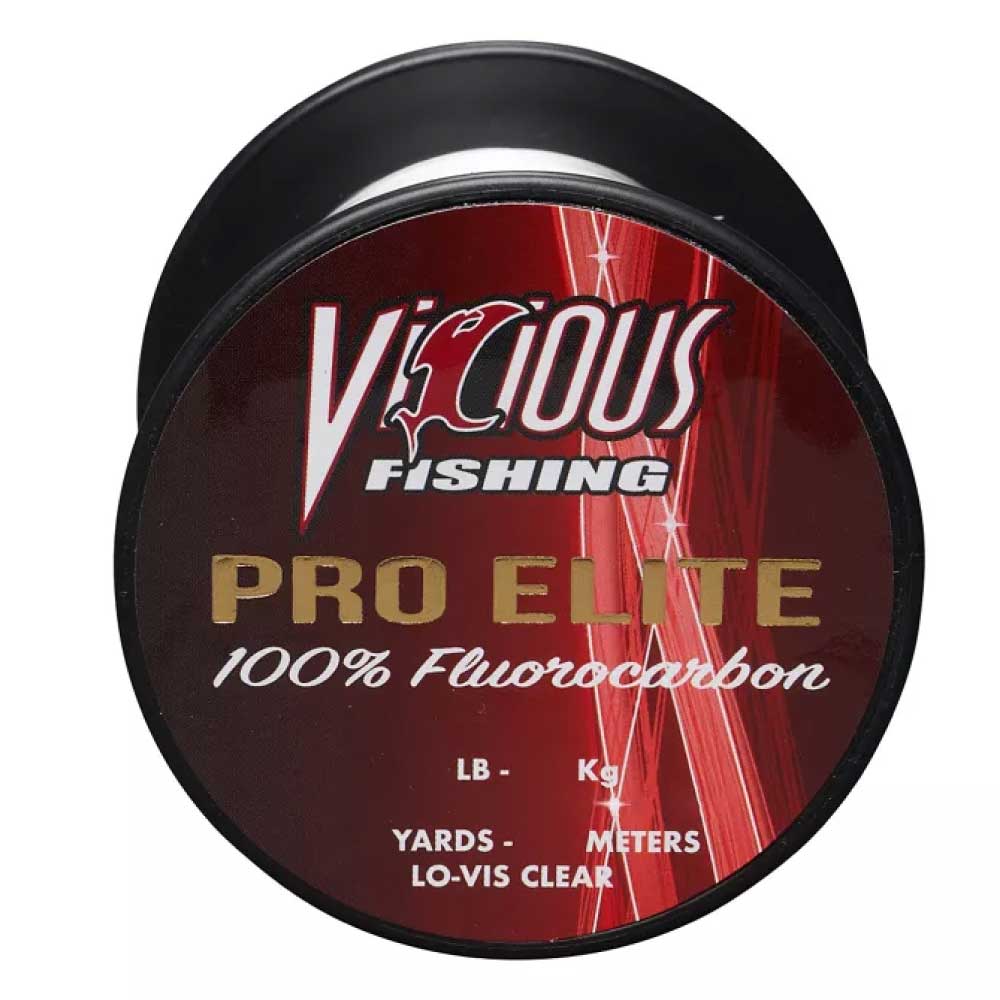
Vicious Fishing Pro Elite 100% Japanese Fluorocarbon Fishing Line
100% Fluorocarbon Fishing Line
Pros (Why we like Vicious Fishing Pro Elite 100% Japanese Fluorocarbon Fishing Line)
This 100% fluorocarbon line gives tremendous sensitivity while still being tough enough to handle the hardest hooksets. Knotting is good, providing great knot strength when tied to a lure or as a leader. This line is virtually invisible underwater for finesse fishermen using techniques like the drop shot.
Runner-up for Best Fishing Line for Spinning Reels - Fluorocarbon
Pros (Why we like KastKing FluoroKote Fluorocarbon Fishing Line)
FluoroKote is a hybrid line or copolymer line featuring a 100% fluorocarbon coating to increase abrasion resistance. The smooth coat improves casting performance while also making the line very low visibility.
Unlike other fluorocarbon fishing lines, the copolymer grants more stretch giving anglers an ideal line for deep diving lures when trolling. With the increased stretch spinning reel, fishermen will also find a line with less memory than the 100% fluorocarbon lines.
Our Top Pick for Best Fishing Line for Spinning Reels - Monofilament
Pros (Why we like Berkley Trilene Big Game Monofilament Line)
The Berkley Trilene line has been on the fishing landscape for decades. There is a good reason why. Trilene is a tough monofilament line; the advanced abrasion-resistant coating helps shrug off toothy pike or the piling that a large fish may dive under. The 1/4 lb spool provides anglers with a great value to keep their spinning reels spooled up for many fishing seasons.
Runner-up for Best Fishing Line for Spinning Reels - Monofilament
Pros (Why we like Ande Premium Monofilament Fishing Line)
Ande’s Premium Monofilament is ideal for anglers looking to fish deeper than "normal" monofilament. Ande has a thin diameter for the strength than the competition allowing for less water resistance for a lure or bait to overcome.
The narrower diameter line also improves casting by reducing drag in the air. The lower memory of this line is another great attribute of this mono fishing line.
Our Top Pick for Best Fishing Line for Spinning Reels - Braided
Pros (Why we like Vicious Fishing No-Fade Braid Fishing Line)
Braided lines are well-loved for their casting performance; the No-Fade Braided line ensures this through a unique braiding process to create a super smooth line. No-Fade's eight-strand weave creates a rounded line that casts better than many options on the market.
The round line also eliminates the "whooshing” sound that accompanies rougher braids as they are retrieved. As the name would imply, No-Fade has a color lock treatment to give the line superior vibrancy and long-lasting color.
Runner-up for Best Fishing Line for Spinning Reels - Braided
Pros (Why we like SpiderWire Stealth Blue Camo Braid Fishing Line)
SpiderWire has been a name associated with braided line for spinning reels for a very long time. The Stealth line of braided lines features Dyneema®, one of the world's strongest fibers, to create a hyper-thin line.
The Stealth Blue Camo casts incredibly well, owing to its round construction. The Color-Lock blue, gray, and white camo pattern allow this line to fool line shy fish blue water fishing. The SpiderWire Stealth Blue is an exceptional choice for live bait or surf fishing.
Fishing Line Buyers Guide
The three types of fishing lines are braided fishing line, monofilament line, and fluorocarbon line. Each type of line has a unique design and attributes that make it the best fishing line candidate for certain types of fishing for spinning reels.
We are covering the best fishing line for spinning reels to give anglers a better picture of the benefits of braided lines, monofilament, and fluorocarbon lines.
The action of a spinning reel is unique in the way that line is wound onto the spool. This can also create challenges for casting if the line is not properly matched to the spinning reel and tackle used.
Fluorocarbon Fishing Lines
A fluorocarbon fishing line is a unique line type that could almost be called a braided line and monofilament hybrid fishing line. The fluorocarbon line takes extruded strands of fluorocarbon and weaves them together like a braid. The result is a line that has increased sensitivity and better casting distance with the bonus of being very low visibility.
Fluorocarbon has a similar diameter to monofilament in the same weight to line capacity isn't lost when switching to fluorocarbon. An asset of fluorocarbon is it is denser than water. The sinking line is ideal for anglers fishing deep-running lures like crankbaits.
The low visibility and sensitivity of fluorocarbon have made this line indispensable for anglers fishing finesse lures where fish are easy to spook. Even when not tied as a mainline, fishermen consider a fluorocarbon leader indispensable for pressured fish.
For all its advantages, fluorocarbon does have some drawbacks. For most anglers, the first concern is fluorocarbon's "slickness," which makes it difficult to tie knots. Anglers need to check and double-check knots to ensure they are well fastened.
Fluorocarbon is a high line memory, meaning that the line will stay in the position it has been kept in. spinning reels put a significant amount of tension on the line when it's reeled, and the end result is spinning reels impart more memory on line than other reel styles.
Anglers who don't condition their line may end up with a line that looks like a slinky instead of a fishing line. Last but perhaps not least, fluorocarbon is more expensive than braid fishing lines or monofilament lines.
Monofilament Fishing Lines
The monofilament line is a popular choice for spinning reels. The inexpensive line style is forgiving for anglers looking to do a bit of everything. Monofilament is made of a single extruded strand of nylon.
The density of this line is about the same as water earning it the title of neutrally buoyant. The advantage of a floating line is it pairs well with topwater or shallow running lures.
Monofilament has a substantial amount of elasticity to it. For anglers trolling, the flex from monofilament keeps the line from breaking from the impact of a bite or tearing hooks out of the fish. Mono, as it is sometimes referred to, is translucent like fluorocarbon but as a single line reflects more light.
For most line-shy fishing, monofilament still works. Proving the middle ground again that the mono line occupies, it has less line memory than fluorocarbon, but it does have some. Monofilament is user-friendly in its ability to hold knots while still being forgiving enough to retie when needed.
Monofilament, like all fishing line for spinning reels, does have some drawbacks. Most notable is the monofilament line's low abrasion resistance. Monofilament is made of a single strand of line and is susceptible to knicks and cuts from rocky bottom structure or even a fish's mouth that may lead to line breaks. Leaders can be made of a thicker monofilament but must still be inspected for damage.
The monofilament line is also susceptible to sun damage. Throughout the season, monofilament may break down and become brittle. As a precaution, many serious anglers re-spool their spinning reels every year.
Braided Fishing Lines
Braided fishing line is actually the oldest style of fishing line. Featuring a pattern braided line, it grants incredible sensitivity and strength. The braided line is significantly smaller in diameter than other fishing lines for the same weight. The thin diameter allows more line capacity and increases the long casting distance.
The braided fishing line floats, making it a fantastic choice for topwater frogs that require the strength and sensitivity that the braided line affords. Anglers looking to cast long distances choose braid for both the capacity and low wind resistance.
Braid has virtually no line memory and increases its castability even further. Braid is not translucent, and while this is usually associated with a negative, for anglers that need to monitor multiple lines, the higher visibility afforded by solid color line is an advantage. The braided fishing line has a very high abrasion resistance making it well suited for fishing around rocks and jetties.
Braided fishing line’s strengths are occasionally its weaknesses too. Braid's lack of stretch makes getting stuck more of a challenge. Unlike more forgiving lines, braid tends to cut into a softer structure like wood, making retrieving a stuck line difficult.
Braid's exceptional knot ability is a significant complaint from some anglers. Knots and accidental knots caused by wind are nearly impossible to untie. For spinning reels, "wind knots" are caused by reeling the spool without closing the bail.
FAQs about Fishing Lines for Spinning Reels
What kind of fishing line is best for spinning reel?
There’s no one answer. All line types have certain techniques and scenarios where they perform best. However, If we had to fish with one type of line exclusively, it would probably be monofilament. Monofilament's ease of use, from knot tying to low memory, makes it a great line for novice anglers.
Is mono or braid better for spinning reels?
Braid and mono are both great choices. The braided line has an edge with its casting performance and lack of line memory. When targeting big game fish that can pull drag, the added line capacity of braided line tilts the choice even farther in braids' favor.
Is fluorocarbon line good for spinning reels?
There is a lot of debate surrounding the use of fluorocarbon line for spinning reels. Some anglers swear by it, while others say that it's not worth the hassle. The truth is, there are pros and cons to using fluorocarbon line.
On the plus side, fluorocarbon line is virtually invisible in the water, which makes it great for fishing in clear streams and ponds. It also has a high abrasion resistance, meaning it can withstand rough treatment from rocks and other underwater obstacles.
However, fluorocarbon line is also more expensive than monofilament line, and it can be more difficult to work with. It tends to be less responsive than monofilament.
Should I use braid on a spinning reel?
The capacity and sensitivity of braided fishing lines are hard to beat. With the smoothness of braid, some spools require modification to hold the narrow diameter line properly. Luckily most new reels come with a "braid friendly" spool.
Should I soak braid before spooling?
For most line like mono and fluorocarbon, soaking in warm water for 20-30 minutes helps make the line more flexible and makes spooling easier. Easier spooling reduces the line memory and creates fewer line twists in the line. Braided line does not need to be soaked. The lack of line memory and the materials that braided line means braid does not need a soak.
What pound line should I use for spinning reel?
When it comes to catching large fish with a spinning reel, you will want to use a heavier line. For smaller fish, a line that is six pounds or less should do the trick. Another good rule of thumb for line size on a spinning reel is to use a line that is about the same diameter as the width of your lure. So if you are using a 1/4-ounce lure, use a 6-pound test line. If you are using a 3/8-ounce lure, use an 8-pound test line, and so on.
However, for larger fish, you will need a line with more strength; something in the vicinity of 10-12 pounds should do the trick. And remember, it's always better to be safe than sorry; if you are not 100% sure what size line to use, go with a heavier one. That way, you won't be disappointed when that big fish tries to take off with your reel!
How full should you spool spinning reels?
It is best to fill the entire reel of the spinning reel spool to ensure proper function and avoid line twist. When a spinning reel is not properly filled, it can put unnecessary stress on the gears, which can lead to malfunctions. In addition, when there is too much or too little line on the spool, it can create line twist, which will impact the cast and make your fishing trip much more frustrating.
What kind of fishing line casts the farthest?
The best fishing lines for casting distance are those made of braided material. Braided lines have a much more thin diameter than monofilament lines of the same strength, which means they can shoot through the air more easily. They are also more sensitive to bites and can handle a greater weight without breaking.
Conclusion
In the end, there is no one best spinning reel line. Each type of line has its own strengths and weaknesses, making it the best line choice for different applications.
From the stealthy fluorocarbon for fishing deep fishing to the long casting braided line to the forgiving monofilament, each line provides anglers with a tool to catch big fish with proper application.
While creative anglers can find a way to use braided lines for bottom fishing or mono fishing lines for crankbaits, the truth of the matter is the best line for spinning reels is all of them. So don't be afraid to experiment until you find the best line that works best for you and the style of catching fish you love.
Happy Fishing!
Adventures in Fishing is a participant in the Amazon Services LLC Associates Program, an affiliate advertising program designed to provide a means for sites to earn advertising fees by advertising and linking to Amazon.com.



